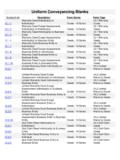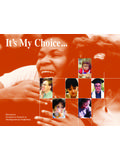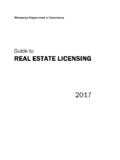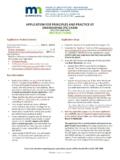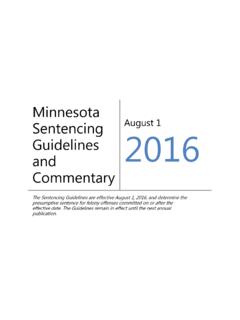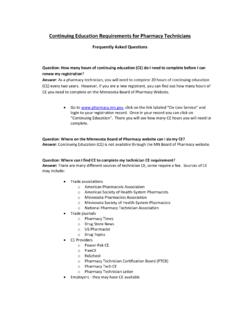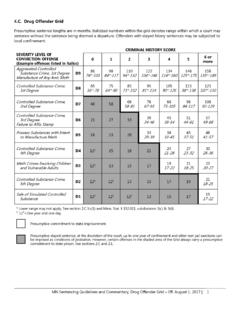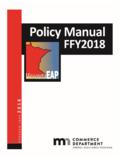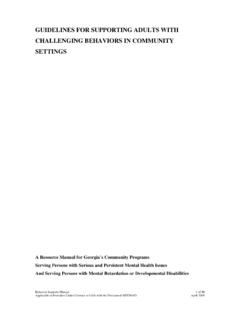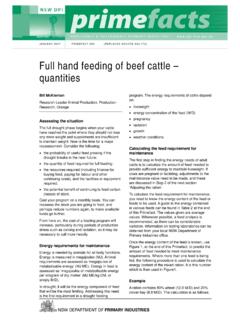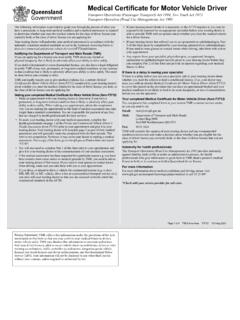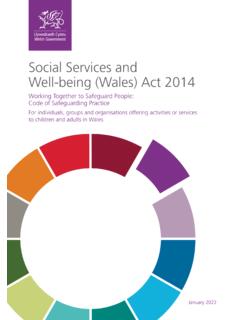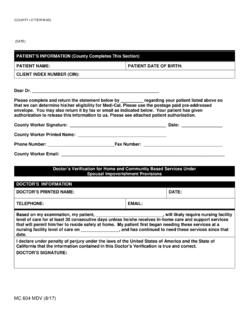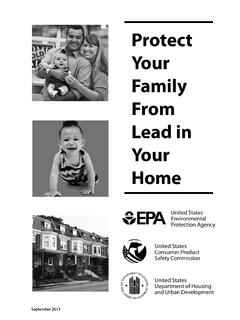Transcription of Auto Insurance Guide - Minnesota
1 Auto Insurance Guide1If you own a vehicle that is licensed in Minnesota , state law requires that you have specific amounts of auto Insurance coverage. The proper coverage can also protect your assets from the financial costs of an accident. It can help to cover repairs, medical bills and expenses you incur if you are at fault for damaging another person s property. You will also likely need a specific level of Insurance coverage if you have a car loan. Lenders typically require that you have coverage to protect their financial interest in the vehicle. If you don t get Insurance or your coverage lapses, the lender will purchase a policy for the vehicle that will likely be more expensive.
2 Safety NetRequired2 Auto Insurance is YourAuto Insurance Is3 All vehicles licensed in Minnesota are required to have the following types of Insurance : Minimum CoveragePersonal Injury Protection (PIP) provides basic economic loss benefits. If you are injured in an accident, this portion of your policy will pay you and the members of your household (within the stated limits) for medical or funeral expenses, lost wages and replacement services. Required amount of coverage: $40,000 (per person, per accident)Liability helps cover injury and property damage expenses that occur when you are deemed at-fault in an amount of coverage: $30,000 (injuries to one person) , $60,000 (injuries to 2+ people) , $10,000 (physical damage to other vehicle or property) Uninsured pays for your medical expenses after you have exhausted your PIP benefits and when the other driver is held responsible for the accident but does not have amount of coverage.
3 $25,000 (injuries to one person), $50,000 (injuries to 2+ people)Underinsuredpays for medical claims of people covered by your policy. These benefits are in addition to your PIP benefits and are used when the other driver is held responsible for the accident and does not have enough liability coverage to cover your medical amount of coverage: $25,000 (injuries to one person) $50,000 (injuries to 2+ people)4 Fault in Minnesota Minnesota is a no-fault state, meaning that drivers who have been injured in a car accident in Minnesota can get compensation under their own Insurance policy regardless of who was at fault for the coverage applies only to expenses resulting from injuries sustained in an accident, not property damage.
4 It is the Personal Injury Protection (PIP) on your Insurance policy. Claims are first made on your own PIP. If expenses amount to higher than the PIP limit on your policy, or if you attain specified thresholds, you may make a claim against the other driver s liability coverage if the other driver is found to be liable. No-fault claims must be made within six months of the accident. 5 Who is covered under my Insurance ? You are covered by the policy in your name. Any resident living in your home who does not have a policy of their own is also covered by your policy. This includes a spouse, adult children riding with you, or a minor in your custody or the custody of a your friend borrows your car and has an accident, and they have their own auto Insurance policy, their injuries will be covered under that policy.
5 If not, the PIP coverage will be paid from your your policy has comprehensive and collision coverage, your car will always be covered under your own policy. Under certain circumstances, however, the policy covering the other vehicle may pay for damage to your car. Check your policy under the definition of your covered auto. 6 Optional CoverageCollision covers damage to your vehicle when you are involved in an accident with another vehicle or object. Comprehensivecovers a loss that is not the result of a collision. This usually includes fire, theft, hail or an accident involving a deer. Rental Cars are insured automatically by your policy for $35,000 of liability coverage by Minnesota law, so it is not necessary to purchase additional coverage.
6 Additional coveragemay include full glass replacement, towing and the use of a rental car when your car is unavailable. Motorcycles and ATVsMinnesota state law requires motorcycles to have: Liability Insurance Underinsured Coverage Uninsured CoveragePIP is NOT required for motorcyclists in Minnesota . ATVs are not covered by standard auto Insurance policies; however, your homeowner s policy might partially cover liability on an ATV. Be sure to ask your Insurance agent or company for more information . 7 Shopping for a PolicyContact several agents and compare rates. Agents selling Insurance in Minnesota must be licensed by the Commerce Department.
7 Use the License Lookup tool at to verify the agent is licensed or call the Consumer Services Center at 651-539-1600 or 800-657-3602 (Greater Minnesota only).Ask about surcharges and discounts. Rates that seem low at first may change dramatically when surcharges are applied. Many Insurance providers also offer discounts for things like car alarms, a clean driving record and purchasing other types of Insurance from the same company. Older vehicles aren t necessarily less expensive to insure. But it may not make sense to keep collision or comprehensive coverage on lower value cars because the Insurance costs could exceed anything you get back on a claim.
8 Consider asking for higher deductibles to lower your premiums. For example, increasing your deductible from $200 to $500 could reduce your collision and comprehensive coverage premium by 15 to 30 Affects Policy Cost?Discounts and SurchargesMany Insurance companies offer discounts if you take defensive driving classes, or if you equip your vehicle with an anti-theft device, for example. They may also attach additional charges to your surcharge disclosure statement. Be sure to ask your types of coverage in your policy have a deductible which is the amount you pay first, before your Insurance company pays, on a covered loss.
9 The higher the deductible, the lower your of VehicleInsurance companies charge more for physical damage coverage on vehicles that cost more to repair or may pay more for coverage if you drive a lot (because the more you drive, the more likely you are to get in an accident).Demographic FactorsInsurance companies are able to charge high risk groups such as teenagers and older adults more for Coverage Adding additional coverage options such as full glass replacement or towing will affect the cost of your You LiveIf you live in an area with more traffic, you have a greater chance of an accident and therefore will pay more for Record You will be rated according to the number of traffic accidents and tickets you have received over a period of years.
10 More incidents will increase your of PolicyCancellationAfter the first 59 days, an Insurance company cannot cancel a policy during the policy term except for the reasons listed below. These reasons can also be used to decline renewal of a policy at the end of the policy period. Nonpayment of a premium The policy was obtained through a misrepresentation The policy holder knowingly made a false or fraudulent claim or aided another in presenting a false claim The insured fails to disclose accidents or traffic violations within 36 months of the event, or to disclose any requested information on the written application that would affect acceptance or the risk rating The policy holder fails to disclose that they are part of a lawsuit or refuses to cooperate in a claim investigation Failure to identify another person in the household who would be insured under the same policy The policy holder has health problems such as epilepsy or heart attacks and does not provide a physician s written opinion that despite these problems.
